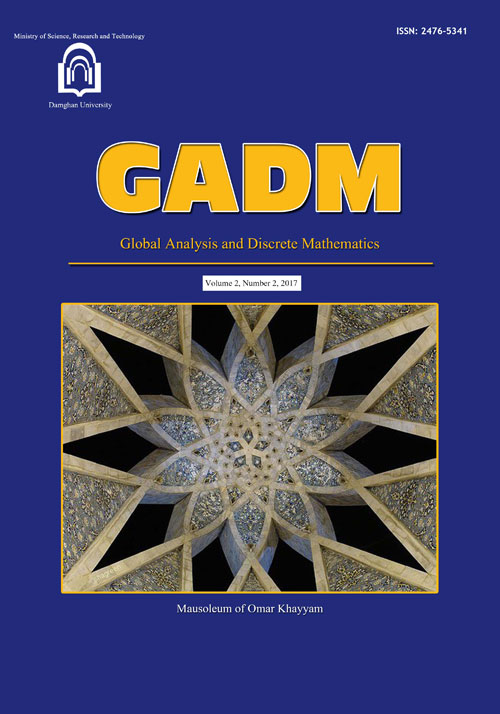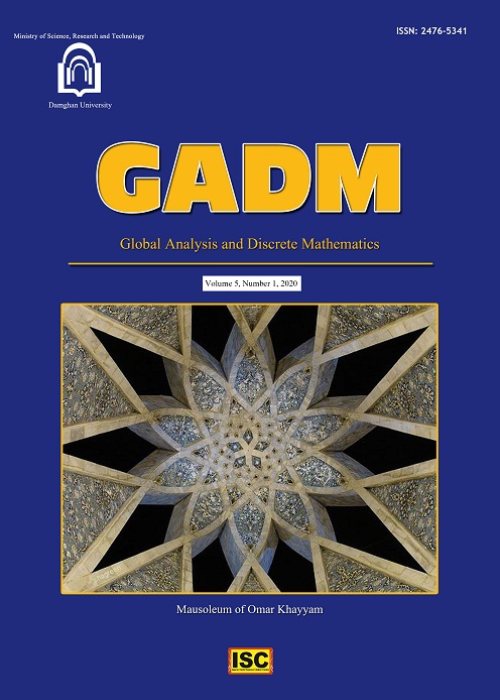فهرست مطالب

Global Analysis and Discrete Mathematics
Volume:2 Issue: 2, Winter and Spring 2018
- تاریخ انتشار: 1396/11/18
- تعداد عناوین: 6
-
Pages 91-101In this paper, we study a new operational numerical method for hybrid fuzzy fractional differential equations by using of the hybrid functions under generalized Caputo- type fuzzy fractional derivative. Solving two examples of hybrid fuzzy fractional differential equations illustrate the method.Keywords: Fuzzy Caputo derivative, Hybrid fuzzy fractional differential, equations, Hybrid functions method
-
Pages 103-114This paper deals with a novel method for solving optimal control problems based on genetic programming. This approach produces some trial solutions and seeks the best of them. If the solution cannot be expressed in a closed analytical form then our method produces an approximation with a controlled level of accuracy. Using numerical examples, we will demonstrate how to use the results.Keywords: Genetic programming, Optimal control problems, Grammatical evolution
-
Pages 115-134In this paper, we propose the new concept of optimal solution for fuzzy variational problems based on the possibility and necessity measures. Inspired by the wellknown embedding theorem, we can transform the fuzzy variational problem into a biobjective variational problem. Then the optimal solutions of fuzzy variational problem can be obtained by solving its corresponding biobjective variational problem.Keywords: Fuzzy variational problems, Fuzzy Euler–Lagrange conditions, Pareto optimality conditions
-
Pages 135-143Let W be a variety of groups defined by a set W of laws and G be a finite p-group in W. The automorphism α of a group G is said to bea marginal automorphism (with respect to W), if for all x ∈ G, x−1α(x) ∈ W∗(G), where W∗(G) is the marginal subgroup of G. Let M,N be two normalsubgroups of G. By AutM(G), we mean the subgroup of Aut(G) consistingof all automorphisms which centralize G/M. AutN(G) is used to show thesubgroup of Aut(G) consisting of all automorphisms which centralize N. We denote AutN(G)∩AutM(G) by AutMN (G). In this paper, we obtain a necessary and sufficient condition that Autw∗ (G) = AutW∗(G)W∗(G)(G).Keywords: W, nilpotent group, marginal automorphism, purely non, abelian group
-
Pages 145-149In [1] (Hybrid Conjugate Gradient Algorithm for Unconstrained Optimization J. Optimization. Theory Appl. 141 (2009) 249 - 264), an efficient hybrid conjugate gradient algorithm, the CCOMB algorithm is proposed for solving unconstrained optimization problems. However, the proof of Theorem 2.1 in [1] is incorrect due to an erroneous inequality which used to indicate the descent property for the search direction of the CCOMB algorithm. It is also remarkable that the proof of the Theorem 2.2 should be revised. Following the notations in [1], the main goal of this note is to provide some necessary corrections to rectify the mentioned issues.Keywords: Unconstrained optimization, Hybrid conjugate gradient method, Sufficient descent condition, Conjugacy condition
-
Pages 151-155Baer has shown that, for a group G, finiteness of G=Zi(G) implies finiteness of ɣi(G). In this paper we will show that the converse is true provided that G=Zi(G) is finitely generated. In particular, when G is a finite nilpotent group we show that |G=Zi(G)| divides |ɣi(G)|d′ i(G), where d′i(G) =(d( G /Zi(G)))i.Keywords: Theorem, Lower central series, Upper central series


